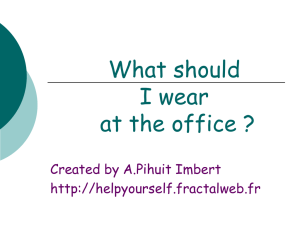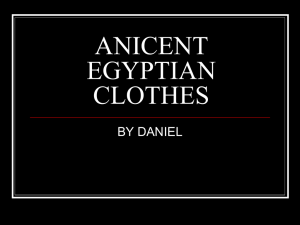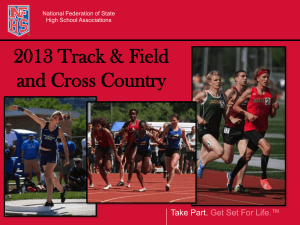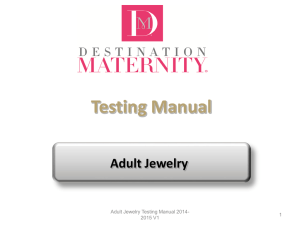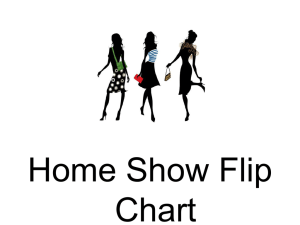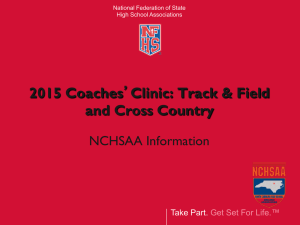ruling - Bob Trump
advertisement
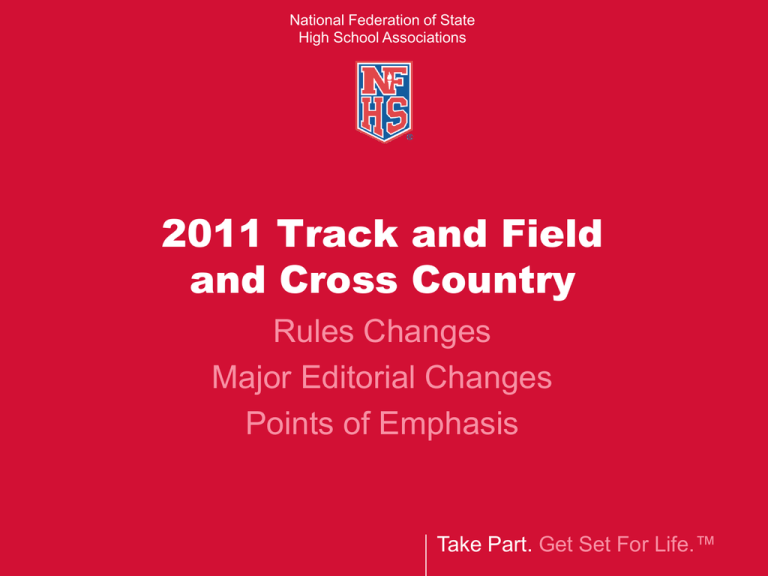
National Federation of State High School Associations 2011 Track and Field and Cross Country Rules Changes Major Editorial Changes Points of Emphasis Take Part. Get Set For Life.™ National Federation of State High School Associations Take Part. Get Set For Life.™ 2011 NFHS Track and Field Publication Corrections Rules Book Page 31 – Rule 5-3-7 Notes 1 2nd line change 30cm to 20cm Page 55 – Rule 7-5-3, 3rd line landing box to plant box Page 70 – Rule 9-6-3 item d should be shaded Page 71 – Rule 9-7-4 should be (see 4-6-7) Case Book Page 6 – 7.4.11 Situation, 2nd line should be “They are tied and both…” Page 86 – 7.5.29 Situation H, 1st line change valuter to vaulter. Meet Director Rule 3-3-1 Identifies the meet director as the official representative of the host meet management. • Designates a specific person to serve as the contact person for the host school to guarantee competition will run smoothly. • In the absence of a games committee, the meet director performs duties assigned to the games committee. Meet Director Rule 3-3-2 It is the responsibility of the meet director to handle: • unsporting conduct by a spectator(s) • other matters outside of the competition rules. If necessary, the meet director may designate another representative of the host meet management to serve as his/her designee for these matters. Meet Director Rules 3-3-1, 2 Official representative of host meet management Responsible for handling unsporting spectator conduct Meet Director Responsible for matters outside of competition rules Meet Director Rule 3-3-2 It is the responsibility of the meet director or his/her designee to address unsporting conduct by a spectator. Jewelry Prohibited Rules 4-3-3, 9-6-3, Penalties Jewelry shall not be worn by competitors in track and field or cross country. Items not considered jewelry include: • • • • medical alert bracelets and necklaces religious medals a watch worn around the wrist (PIAA modification) unadorned devices such as bobby pins and flat clips (no longer than two inches) worn to control the competitor’s hair. Jewelry Prohibited Rules 4-3-3, 9-6-3, Penalties Penalty for wearing jewelry in track and field or cross country have been modified. When a meet official observes a competitor wearing jewelry in track and field, the official shall: • for the first violation, require the competitor to remove the jewelry before further competition • the team shall receive a team warning with notification to the head coach by the referee • subsequent violation by any team member shall result in disqualification of the competitor from the event. The referee shall be notified of the violation by the observing meet official and he/she has the responsibility to notify the head coach of a the violation and warning. Jewelry Prohibited Rule 4-3-3, Penalty If a competitor is observed wearing jewelry during competition and this is the first violation by any team member, the competitor is to remove the jewelry and the team receives a warning from the referee to the coach. Jewelry Prohibited Rule 4-3-3, Penalty A subsequent violation of wearing jewelry by any member of the team after a team warning shall result in disqualification of the competitor from the event. Jewelry Prohibited Rule 9-6-3, Penalties When a meet official in cross country observes a competitor wearing jewelry prior to the start of the race, the official shall: • notify the competitor and his/her coach to remove the jewelry before being eligible to compete • by way of the referee, issue a team warning to the coach that a second violation of the jewelry rule by any team member during the race shall result in disqualification of the competitor Jewelry Prohibited Rule 9-6-3, Penalties When a meet official in cross country observes a competitor wearing jewelry during the race, the official shall: • notify the meet referee who shall issue a team warning for the violation. • if the school is entered in subsequent races of the same gender, on the same day, a subsequent violation shall result in disqualification of the competitor involved. Jewelry Prohibited Rule 9-6-3, Penalties 9.6.7 SITUATION: The first runner for Team A, No. 398, crosses the finish line and is observed wearing an earring. At the completion of the race, one of the course umpires reports to the meet referee that Team A runner No. 395 was observed at the halfway mark on the course wearing a bracelet. The meet referee address the violation of Rule 9-6-3 with Team A’s coach and a warning is issued, but neither runner is disqualified. RULING: Correct procedure. COMMENT: The wearing of jewelry is prohibited. For the first violation, the team receives a warning by way of notifying the coach. In cross country, it is not possible to issue a warning for the one race in progress. However, if the school has other levels of races for the same gender on the same day, any further violations of 9-6-3 should result in a disqualification of the competitor. Jewelry Prohibited Rules 4-3-3, 9-6-3, Penalties Important to practice preventive officiating. If a competitor is observed wearing jewelry or an illegal uniform prior to competition and can be addressed by the official and make the uniform legal or remove the jewelry without delay, this is always a better situation for all parties involved. Jewelry Prohibited Rules 4-3-3, 9-6-3, Penalties Preventive action Jewelry Legal for competition Jewelry – Medical Alerts Rules 4-3-3a, 9-6-3a Changes the requirements while wearing a medical alert bracelet to accommodate new styles and materials. • The alert should be visible • When an alert medal is attached to: • a bracelet made of metal or an unyielding material, it shall be taped to the body • a bracelet made of a pliable material, it is not required to be taped to the body • a necklace, it shall be taped to the body Jewelry – Medical Alerts Rules 4-3-3a, 9-6-3a Medical alert bracelets made of pliable material are not required to be taped to the body. Jewelry – Medical Alerts Rules 4-3-3a, 9-6-3a Metal medical alert bracelets and all medical alert necklaces shall always be taped to the body. Hair Devices Rules 3-2-4o, 4-3-3d, 9-6-3d Jewelry is prohibited from being worn in competition and this includes various items worn in the hair. Items such as rubber bands, cloth headbands or scrunchies may be approved by the games committee to control the hair and not considered jewelry. The state association may develop an across the board policy or interpretation on what is considered jewelry and prohibited and what would be acceptable for hair control. Hair Devices Rules 3-2-4o, 4-3-3d, 9-6-3d Unadorned devices, such as bobby pins, barrettes and hair clips, no longer than 2 inches, may be worn to control the competitor’s hair. • Do not require action by the games committee to be worn and are legal • Are not considered jewelry Hair Devices Rules 4-3-3d, 9-6-3d Headband approved by games committee. Unadorned hair devices, such as bobby pins or flat clips, no longer than 2 inches are legal. • No games committee action needed The ultimate decision on hair devices and what constitutes jewelry rests with the state association. Hair Devices Rules 4-3-3d, 9-6-3d Illegal Legal Braces, Concussion Management and Modifications Rules 4-4-1 thru 3 Updates and clarifications, with assistance from the NFHS Sports Medicine Advisory Committee, were included in the rules. • • • • Guards, casts, braces, splints Artificial limbs Concussion management Modification of uniform/equipment for disabilities. Braces, Concussion Management and Modifications Rules 4-4-1 thru 3 If a guard, cast, brace, splint, etc. (hard and unyielding items) is worn by a competitor and determined by the referee padding is required, it should be: • closed cell, slow recovery foam • no less than ½ inch in thickness. It is not likely the referee will frequently experience the need to invoke this rule due to the nature of the sport. Should the referee have a need for clarification on a specific item, the state association should be contacted for an opinion. Braces, Concussion Management and Modifications Rule 4-4-2 Includes a procedure to follow when exceptions to the rules regarding uniform or equipment are requested and considered by the state association for medical or religious reasons. Modifications, pending approval, shall require a letter of authorization from the state association. Letter of authorization shall be made available to the meet referee prior to competition. Concussion Management Rule 4-4-3 Coaches, officials, athletes and parents should become familiar with the signs, symptoms and behaviors of a possible concussion Each state association will develop a protocol for handling removal and returning to competition if an athlete displays concussion symptoms as well as the definition of “appropriate health-care professional” Concussion in Sports www.nfhslearn.com Order of Competition in Throwing and Jumping Event Preliminaries Rules 6-2-6, 7-2-6 Preliminary Competition Head event judge may change the order of competition to accommodate a competitor(s) to be excused to participate in other event(s) • Competitors may take more than one trial in succession. • If weather or other condition would result in unfairness to any competitor, the referee shall alter the plan and prescribe single trials in prelims and finals. Meet Equipment Malfunction Rule 7-2-12 In the high jump and pole vault, if improperly fastened supports slip downward when a jumper hits the crossbar and it is displaced, it is no longer a failed attempt. The head judge of the event shall rule no jump/vault. The jumper/vaulter is allowed another trial. High Jump/Pole Vault Crossbar Placement Rules 3-2-3j, 7-4-11, 7-5-18 Games committee establishes starting height and successive heights of the crossbar in high jump and pole vault. When only one competitor remains in the competition and he/she has been determined to be the event winner then the competitor may determine successive heights of the crossbar. High Jump/Pole Vault Crossbar Placement Rules 3-2-3j, 7-4-11, 7-5-18 7.4.11 SITUATION: Two competitors remain in the high jump competition. They are tied and both will be attempting 6 feet. A1 misses on all three trials. B1 misses on his/her first two trials. Before taking his/her third attempt, B1 requests the crossbar be raised to 6 feet, 1 inch which would be a school and meet record, if cleared. The head event judge denies the request as B1 is not yet determined to be the winner of the event. RULING: Correct procedure. COMMENT: Once B1 is determined to be the event winner, he/she may determine successive heights of the crossbar. Pole Vault Warm-ups Rule 7-5-16 A competitor(s) who has passed three consecutive heights and has not entered the competition: • should be permitted two minutes of warm-up jumps per the number of competitors entering at that height without the crossbar in place; • shall enter the competition at that height; • must take warm-up at a height change. Pole Vault Warm-ups Rule 7-5-16 When more than one competitor is entering at the same height, warm-up periods are added together. 2 competitors entering = 4 minutes 3 competitors entering = 6 minutes, etc. Pole Vault Rule 7-5-29a NOTE Crossbar and/or uprights are placed incorrectly by the officials and the crossbar is displaced by the competitor: • The trial is not recorded as a foul. • The vaulter has an additional trial. National Federation of State High School Associations 2011 Major Editorial Changes Take Part. Get Set For Life.™ Major Editorial Changes Rules 3-2-7, 3-2-4p, 3-9-6 Video replay or television monitoring equipment, other than the official finish line equipment… …assist in the final decision of place finish in a race a review of official pictures/video of the finish to assist in the final decision of place finish in a race… Major Editorial Changes Rules 3-8, 3-9 Rule 4-3-1b new 8, NOTE Rule 5-5-7 Reorganized the rules regarding finish judges and timers when using fully automatic timing and when using manual timing. Added language to clarify requirements on colors for visible undergarments. All sections for an event shall use the same starting procedure. Major Editorial Changes Rule 5-9 Rules 6-2-7, 7-6-13 Rule 7-6-11 Moved the definition of interference into a new section, Infractions for All Races, from its previous location in 4-5-3. Standardized language in throwing and jumping events that the head event judge may change the order of competition for competitors being excused for another event. Article 10 from 2010 was split and a new Article 11 was created. In both preliminaries and finals, trials may be taken in succession… National Federation of State High School Associations 2011 Points of Emphasis Take Part. Get Set For Life.™ Points of Emphasis Excused Time from Field Events Games committee has responsibility to determine time limit and procedure for competitors to be excused for another event. Good communication is essential to convey the time and procedure to coaches and officials. Coaches have the responsibility to communicate this information to contestants. Event judges must be knowledgeable of their responsibilities and authority to adjust competition for competitors being excused for another event. Equally important coaches have educated their athletes on options for change in order of competition or trials in succession are available to them. It is the responsibility of the competitor to be aware of and honor the established time limit to be excused from an event to participate in another. Points of Emphasis Discus Cage Guidelines The rules and guidelines for the discus cage have been a part of the rules for many years. Schools, recognizing the risk minimization concerns with the event, should have or upgrade their discus facilities to meet or exceed the minimum requirements in the rules and the guidelines. Athleticism of today’s discus throwers necessitate a cage that is designed to provide protection for competitors, officials and spectators in immediate throwing area. The cage material should be of heavy nylon material or other shock absorbing material. The cage wings and height should provide protection based on the improved athletic performances of today’s athletes. Coaches should work with their school to keep this venue up to date with the cage design and material. Points of Emphasis Preventive Officiating All meet officials should review their responsibilities before the competition. Key areas for the officiating team include how they will communicate, how to handle and record violations, protocol for jewelry or uniform violations, and what checks will be followed for each event for preventive officiating. Ultimate responsibility for following jewelry and uniform rule rests with the competitor and coach. Points of Emphasis Preventive Officiating At times, the competitor is not in compliance, but with some preventive officiating the competitor can remove the jewelry or make the uniform legal without delaying the meet and avoid an unnecessary disqualification. The officials should have a routine to follow to be certain, as a part of preventive officiating, they remind and check competitors for jewelry or uniform issues so they can be corrected before entering a penalty phase. Goal of all involved is to have each athlete participate and do so within the rules. Review when an event begins. (Rules 4-7-1 and 2) Points of Emphasis Concussion Management, Casts, Braces, Prostheses and Blood on Uniform The NFHS Sports Medicine Advisory Committee has been working with all sport rules committee to update policies and position statements to be up to date with current practices, braces/supports, knowledge of concussions and proper management and other matters relating to risk minimization for athletes. “Suggested Guidelines for Management of Concussion in Sport” has been developed and appears in Track and Field Rules Book. Addresses symptoms and behaviors of concussion, sideline decision making and appropriate health-care professional’s clearance for return to play. Points of Emphasis Concussion Management, Casts, Braces, Prostheses and Blood on Uniform Rules have been included regarding casts, braces supports and procedure if, in rare occasions, they should be padded. Use of prostheses and the procedure to handle bleeding and blood on uniforms are a part of the rules. Coaches should be prepared along with the health-care professionals to provide the medical coverage needed in the event an athlete becomes ill or is injured. NFHS Track and Field Pre-Meet Notes NFHS Track and Field Pre-Meet Notes will be available online in early December at http://www.nfhs.org/track.aspx NFHS Track and Field Pre-Meet Notes is made possible through the cooperative efforts of the NFHS Track and Field Rules Committee and USA Track and Field Officials Training Subcommittee NFHS Officials Association Central Hub www.nfhs.arbitersports.com Contains sport information rules information rules library searchable rules book and case book video content on officiating sport, competition situations and interpretations NFHS Track and Field and Cross Country The Rules Book, Case Book, Officials Manual and Scorebook can be ordered: • Online at www.nfhs.com • By calling 1-800-776-3462

